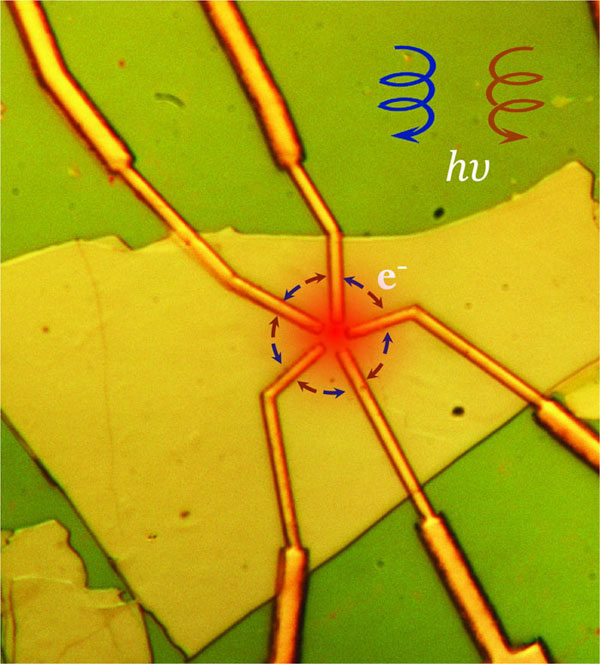A new study from the University of Pennsylvania reports that Weyl semimetals, a class of quantum materials, have bulk quantum states whose electrical properties can be controlled using light. This work could contribute to a way to engineer and control quantum properties by changing light beam patterns, in addition to giving researchers a means to better observe quantum phenomena.
The ability to generate electric current using light was first discovered in silicon. The group found that by changing the inherent symmetry of the arrangement of silicon atoms on the surface of the material, it was able to control the movement of electrical current. “At that time, we were also trying to understand the properties of topological insulators, but we could not prove that what we were seeing was coming from those unique surface states,” professor Ritesh Agarwal said.
Then, while conducting experiments on Weyl semimetals, where quantum states exist in the bulk of the material, the Agarwal group got results that didn’t match any theories that could explain how the electrical field was moving when activated by light. Instead of flowing in a single direction, the electrical current was moving around the semimetal in a swirling circular pattern.

This is a microscopic image of multiple electrodes on a sheet of Weyl semimetal, with red and blue arrows depicting the circular movement of the light-induced electrical current by either left- (blue) or right-circularly polarized light (red). Courtesy of Zhurun Ji.
After thorough experiments to iteratively eliminate all other possible explanations, the researchers were able to narrow the possible explanations to a single theory related to the structure of the light beam. “What made these experiments work is that the beam has a boundary, and what made the current circulate had to do with its behavior at the edge of the beam,” professor Eugene Mele said.
The researchers confirmed the circular movements of the electrical current based on this new theoretical framework and on what they understood about the electron energy levels inside the material. They further found that the current’s direction could be controlled by changing the light beam’s structure, such as changing the direction of its polarization or the frequency of the photons.
Researcher Zhurun Ji said that in previous optoelectronic measurements, it has been assumed that light is a plane wave. “But we broke that limitation and demonstrated that not only light polarization but also the spatial dispersion of light can affect the light-matter interaction process,” she said.
"The idea that the modulation of light's polarization and intensity can change how an electrical charge is transported could be a powerful design idea." Professor Eugene Mele
The work of the Penn team could support the future development of materials that transfer digitized information based on the spin of photons or electrons. Agarwal hopes to expand this work to include other optical beam patterns, such as twisted light, which could be used to create new quantum computing materials that allow more information to be encoded onto a single photon of light.
“With quantum computing, all platforms are light-based, so it’s the photon which is the carrier of quantum information. If we can configure our detectors on a chip, everything can be integrated, and we can read out the state of the photon directly,” Agarwal said.
The research was published in Nature Materials (https://doi.org/10.1038/s41563-019-0421-5).